<--- Back to Details
| First Page | Document Content | |
|---|---|---|
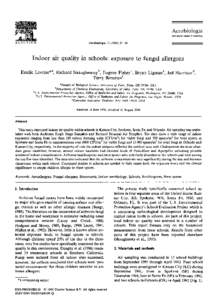 Date: 2010-02-13 16:06:50Air pollution Allergology Capnodiales Industrial hygiene Bioaerosol Indoor bioaerosol Indoor air quality Cladosporium Spore Biology Building biology Medicine |
Add to Reading List |
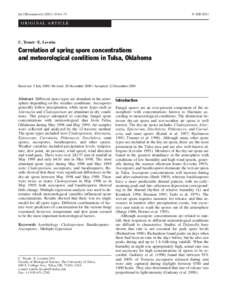 | Int J Biometeorol:64–74 © ISB 2001 O R I G I N A L A RT I C L EDocID: 18WnU - View Document |
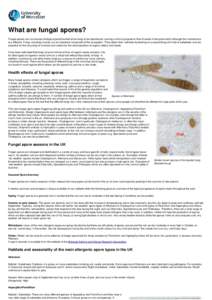 | What are fungal spores? Fungal spores are microscopic biological particles that allow fungi to be reproduced, serving a similar purpose to that of seeds in the plant world although the mechanisms are different. Fungi, inDocID: 18Tkf - View Document |
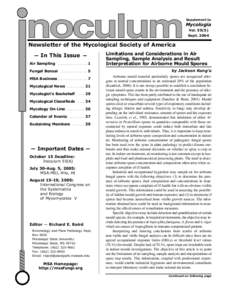 | Supplement to Mycologia VolSept. 2004DocID: 18zuv - View Document |
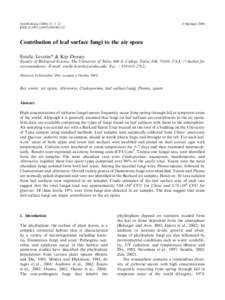 | Ó SpringerAerobiologia: 3–12 DOIs10453Contribution of leaf surface fungi to the air sporaDocID: 18nYd - View Document |
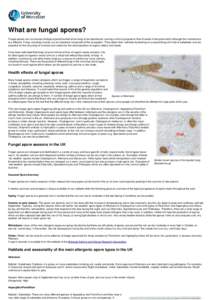 | What are fungal spores? Fungal spores are microscopic biological particles that allow fungi to be reproduced, serving a similar purpose to that of seeds in the plant world although the mechanisms are different. Fungi, inDocID: 18eR4 - View Document |
 Aerobiologia Intetnltla~l Journal of Aerobiology ELSEVIER Aerobiologia
Aerobiologia Intetnltla~l Journal of Aerobiology ELSEVIER Aerobiologia